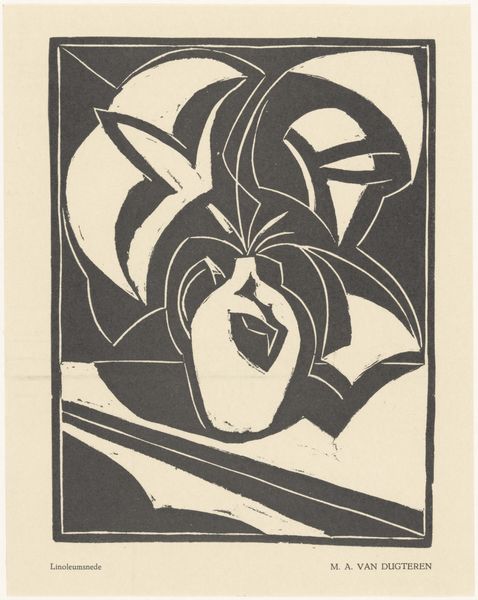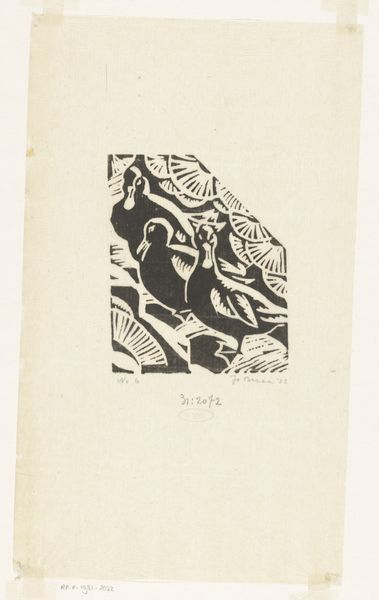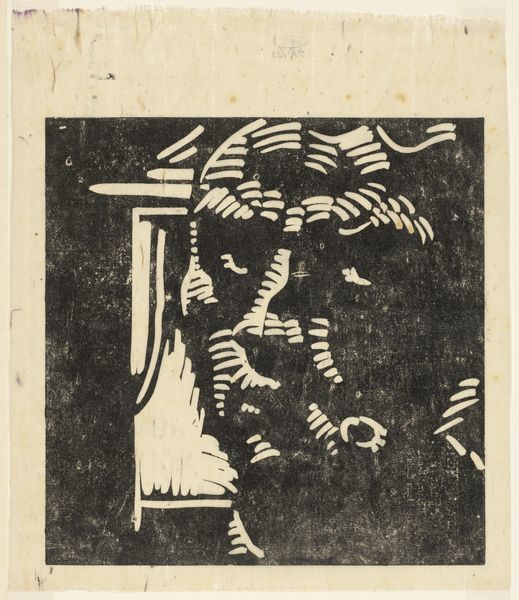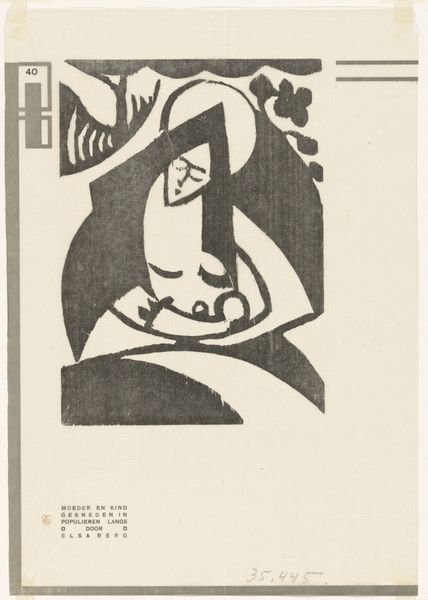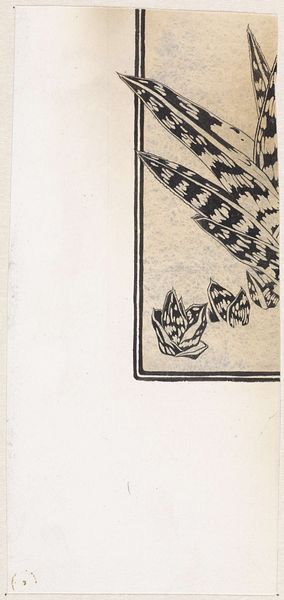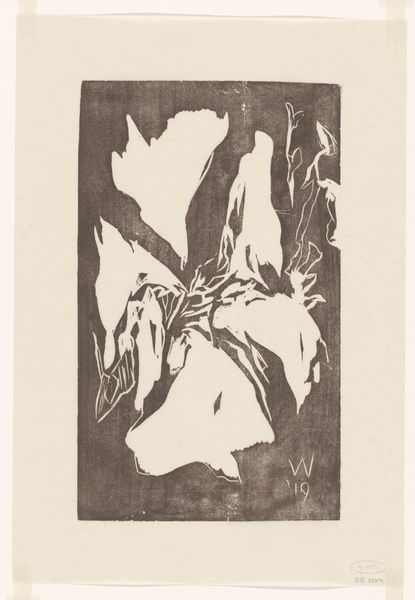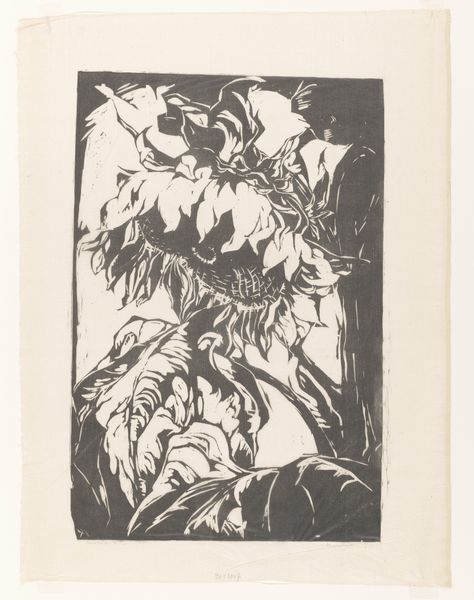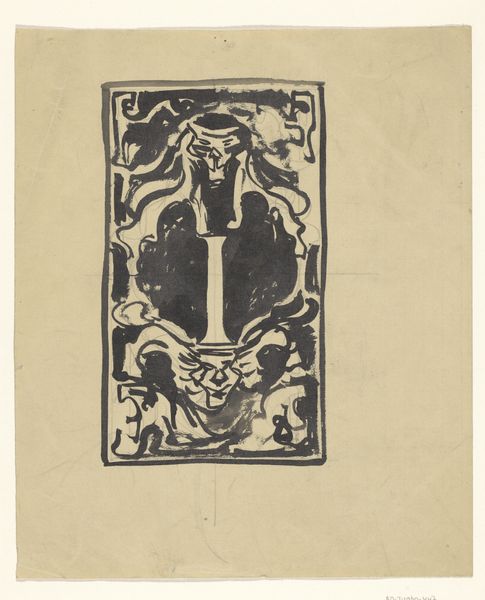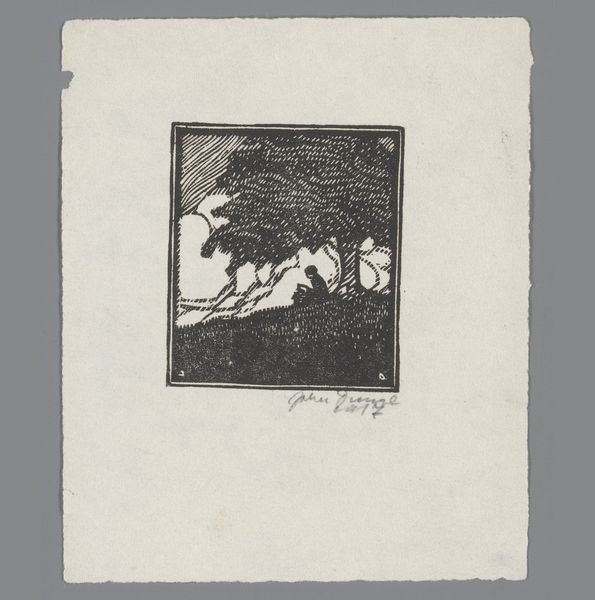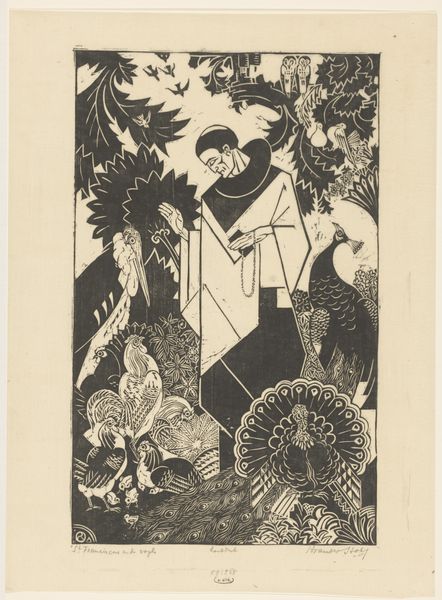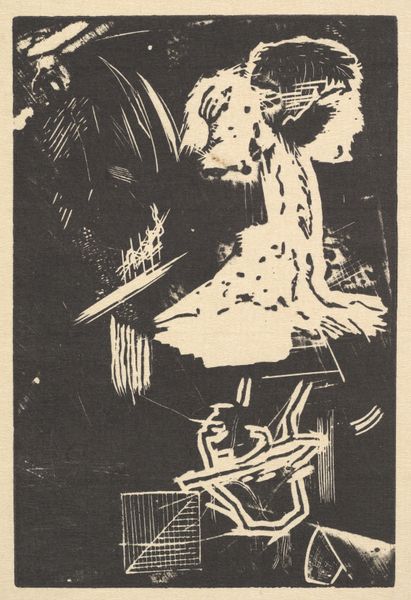
graphic-art, print, woodblock-print
#
graphic-art
#
art-nouveau
# print
#
woodblock-print
#
geometric
Dimensions: height 182 mm, width 138 mm
Copyright: Rijks Museum: Open Domain
Editor: Here we have Julie de Graag’s “Twee voorstellingen,” or “Two Presentations,” made sometime between 1878 and 1924. It’s a woodblock print currently housed at the Rijksmuseum. I am immediately drawn to the strong contrast of black and white. What stylistic elements stand out to you? Curator: The stark opposition of the detailed, almost baroque swirling patterns in the representational image with the flat, solid plane beside it, immediately strikes the eye. Further down, a series of geometrically connected, sharply pointed triangles creates a rhythm of descent that is, itself, offset by its ornate flourishes. De Graag seems to be consciously layering visual vocabularies. Editor: Interesting. The ornate flourishes feel very Art Nouveau to me, especially when juxtaposed against the geometric components of the work. Curator: Precisely. The stylistic dichotomy contributes significantly to the work’s visual interest. Do you observe how the composition directs our focus? The representational panel versus the geometric border... which area captures your attention more forcefully and why? Editor: I think my eye goes to the representational panel first because of the movement and detail. Then I find myself trying to make sense of how it relates to the flat plane. It creates a sort of visual push and pull. Curator: Indeed. That push and pull is generated precisely by the artist's deliberate use of form and juxtaposition. The negative space becomes as crucial as the positive form. Considering the way De Graag deploys different spatial relationships creates a far more rewarding and deeper viewing experience. Editor: It’s fascinating how a formalist analysis really helps unpack the relationships between the different parts of the image and allows you to appreciate the skill involved. Curator: Yes, it allows one to think about an artist's aesthetic decisions beyond mere aesthetic appreciation. One comes to understand the structural intention within the totality of an artwork.
Comments
No comments
Be the first to comment and join the conversation on the ultimate creative platform.
